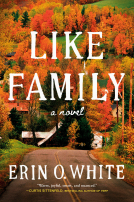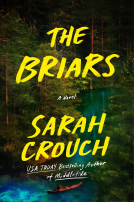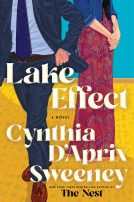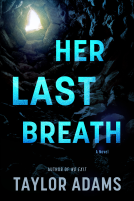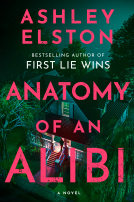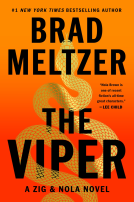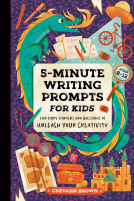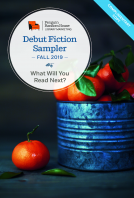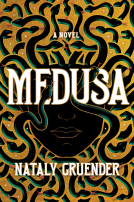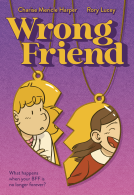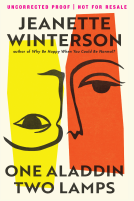
Art of Visual Notetaking
An interactive guide to visual communication and sketchnoting
by Emily Mills
This title was previously available on NetGalley and is now archived.
Send NetGalley books directly to your Kindle or Kindle app
1
To read on a Kindle or Kindle app, please add kindle@netgalley.com as an approved email address to receive files in your Amazon account. Click here for step-by-step instructions.
2
Also find your Kindle email address within your Amazon account, and enter it here.
Pub Date Mar 05 2019 | Archive Date Apr 09 2019
Quarto Publishing Group – Walter Foster | Walter Foster Publishing
Talking about this book? Use #TheArtOfVisualNotetaking #NetGalley. More hashtag tips!
Description
Visual notetaking is the perfect skill for journaling, class lectures, conferences, and any other time that retaining information is key. Also referred to as sketchnoting, visual notetaking is ideal for documenting processes, planning projects, outlining ideas, and capturing information. And as you'll learn in The Art of Visual Notetaking, this approach doesn't require advanced drawing or hand-lettering skills; anyone can learn how to use simple lines, connectors, shapes, and text to take dynamic notes.
In The Art of Visual Notetaking, aspiring sketchnoters and journalers will find helpful "Getting Started" pages of icons and badges for common note-taking purposes, with tips and encouragement for creating you own unique icons. You'll go on to discover instruction and how-to techniques, tips, and tutorials that focus on visual notetaking for different settings, from a business meeting, workshop, or convention, to a college lecture or sermon. Expert instruction from a professional sketchnote artist and educator demonstrates how to visually arrange and compile ideas, focal points, and key concepts.
Marketing Plan
Key Campaign Activity Target media outlets in arts, crafts, DIY
Trade: Finished Advances (Library Journal, Publishers Weekly, Shelf Awareness)
Retail: Finished Advances
Promotion:
Goodreads giveaway through Quarto
NetGalley
Long-lead pitch to art and craft magazines, websites, bloggers for review/giveaways, such International Artist, Creative Bloq, Cloth Paper Scissors, Moyo Magazine, Artists and Makers, Taschen's Illustration Now, American Illustration, Communication Arts, The Society of Illustrator's, Creative Quarterly, UPPERCASE Magazine, Craft Gossip, Empty Easel, Artist's Network, ArtNews, and others. Follow up before book's publication
Long-lead pitch to major outlets as next step in trend of sketch note and bullet journaling (Parade, Redbook, Huff Post, USA Today, etc) Follow-up for holiday and new year's coverage
Book giveaways through Quarto Creates and partner (bullet journal, pen producer, etc) Social media campaign to include blog tour of author’s influencer contacts with giveaway sweepstakes
Leverage author’s social media (combined 5k followers) and contacts in art/design world for pre-order campaign, consumer reviews, giveaways, general promotion
Include in gift guide pitches
Available Editions
| EDITION | Other Format |
| ISBN | 9781633226227 |
| PRICE | $24.99 (USD) |
| PAGES | 128 |
Average rating from 62 members
Featured Reviews
To say that I loved this book would be a complete understatement. It would be more accurate to say that it was rather brilliant! I spend what feels like half my working life notetaking for my Deaf students in my role as a Communication Support Worker and creating visuals for my students in my role as tutor of adults with special education needs. This alternative way to record notes using a visual perspective is just perfect for what I do. However, the target audience for this book is anyone, in whatever setting they happen to be in, who prefers to take their notes visually or who tend to use a visual thought-process to retain information.
They say that a picture can tell a thousand words. Well it most certainly can if you follow this practical guide to the art of visual notetaking.
Many thanks to Netgalley for a copy of this ARC for which I have given my voluntary and unbiased review.
The Art of Visual Notetaking by Emily Mills is a clear, instructive, inspiring beginner’s guide to sketchnoting. It’s a lot of fun. Read with a pen and paper handy.
Mills’s book walks beginners from the definition of sketchnoting to guidance on writing surfaces, pens, how to listen, lettering styles, page composition, basic drawing, and information organisation - as well as insights into the world of professional sketchnoting.
It’s a thoroughly engaging book with sketch prompts, exercises, and illustrative anecdotes. I found the difference between head-to-heart listening and head-to-hand listening illuminating.
The Art of Visual Notetaking is succinct and persuasive. Recommended for those who present or synthesise information of any kind; for students and teachers; diarists and bloggers.
 Karen G, Reviewer
Karen G, Reviewer
This book is fantastic!
I am always fascinated by the videos and pictures of people taking visual notes as they listen to a lecture. I wish I were that talented and able to not only listen to, process but distill and visualize information so quickly and well.
This book breaks down the process for you step by step and highlights all the important factors in creating a visual representation. Emily makes sure to mention all the "basics" that are really the crucial aspects of where to sit, how to listen, how to prioritize and how to plan.
Then she talks about handwriting which she breaks down to simple steps and shows you exactly what you need to practice to get to a place that you like for yourself.
And then comes the part that I consider the hardest: the visuals. Here, too, Emily is fantastic at breaking it down and introducing a concept I'd never heard before called leveling it up where you start with the basics and keep adding to them in little bits to make it better and better.
Emily also talks about adding color, creating a visual library, headers, containers, correcting mistakes, using metaphors and other parts of your visual notetaking journey. Like with all the other chapters, she builds it up in a very consumable, practical way that makes it look achievable.
Like everything else, the only way to really get good at this is by lots and lots of practice which she makes a point of mentioning and giving lots of examples of her progression so you know what pace to expect and she also has exercises at the end of each chapter so you can practice what you just learned.
I know she makes it look much easier than it is and it will take a lot lot lot of practice but this book is inspiring and informative and encouraging in all the right ways. If you're even remotely interested in this area I cannot recommend it enough.
thank you to netgalley and the publisher for an advanced copy in exchange for an honest review.
Visual notetaking is a skill I have coveted for some time, after watching a couple friends do it superbly. I thought this would be an excellent way to learn more about the process and begin to cultivate the skill myself. I was right!
Mills offers a step-by-step introduction to visual notetaking, covering all the whys, hows, whens and whats. This is definitely a book for beginners who need to learn about tools as well as techniques. She is meticulous in detail, which is wonderful for beginners but a little pendantic for anyone who has even a little bit of experience with drawing and sketching. However, even though Mills exhorts the reader to read each chapter in order, it’s easy enough to skip the stuff you don’t need. The gold here is the advice and instruction Mills gives on *how* to take notes, especially the emphasis on listening and practicing.
This will be popular with people exploring lettering and bullet journaling, but also with people looking for a new way to record and absorb information.
As an university student, I have to follow a lot of lectures, so I take a lot of notes. I'm always on the lookout for useful tips on note-taking and processing my notes. So when I saw this book, I knew I had to check it out.
It's a very helpful and insightful book. There's tips about note-taking, but also about listening to speakers in general. There's also some hand-lettering guidance. A lot of exercises are in this book to help you make the best notes. Also, all the information is summarized after every chapter.
A must-read for students and working people!
When I first came across The Art of Visual Notetaking, I thought it was something that might appeal to me. The book is nicely laid out, with plenty of excellent information and some good examples. It did concentrate on visual notetaking at events and conferences, and I might have liked to have seen a few more examples from the more personal side of things, but that is a minor complaint, as the book was, on the whole, an interesting and informative read. I liked the fact that there were spaces available in which you could practice different ideas, and everything was clear and easy to follow. I would definitely like to give visual notetaking a try after reading this text. 4.5 stars
 Heather S, Reviewer
Heather S, Reviewer
The Art of Visual Note Taking by Emily Mills is a wonderful beginner’s guide to sketch-noting. Emily Mills gives step by step instructions and tips. She does a great job of explaining why the steps and the method for each step are important. At the end of the sections are informational boxes with additional tips. There are even exercises to practice the new skills and tips. She even covers in great detail the supplies and tools needed for you to succeed. I highly recommend this book!!!
 Educator 488420
Educator 488420
This book was awesome!
It was super easy to read and I was going to just flip through it first and then come back and read it... but I got so sucked in and the format, tips, writing, and illustrations were all so appealing and useful that I got totally sucked in.
I looked up and realized I had consumed the whole book and felt very inspired to give this little inkling of a passion a try.. I want to buy this book when it actually comes out because I want my own copy to refer to!
Thank so much to the publishers, Netgalley, and the author for access to an ARC of this book in exchange for an honest review. I can’t wait to use it a ton and refer others to it.
Thank you to Net Galley and the publisher for an e-ARC of this title. I also ran this by my 18 year old daughter, who is dyslexic and soon to enter college. We both loved this book. Everyone has a different learning style, and this connects the dots for those who might that typical note taking doesn't help them retain the information. This gets a thumbs up from both of us.
The Art of Visual Notetaking was a great exercise in my drawing skills. I enjoyed learning different way to do things. Since things in visual notetaking are suppose to be recognizable, not realistic, that spoke more to my art style. This is away to help myself engage when going to speeches (i have to do something with my hands). While the author gives you notes on how to share out work, it didn't really go into get jobs as a visual notetaker. Heck, i didn't know this existed but, for someone like me, I loved to have notes like this!
 M T, Reviewer
M T, Reviewer
I love this book! I have always drawn notes when I'm at church, or at a conference, but I have never really learned more tools on how to take it to the next level. Emily teaches you everything you need to know to get started on your journey of sketch notetaking! She goes step by step helping you get a good grasp of how to create your own style. I really love the idea of the headers. I never thought to go that detailed and actually draw the speaker. Super cool.
 Tina S, Reviewer
Tina S, Reviewer
It is a good reference if you are interested in Visual Notetaking. I think it would take a while to become used to it if you weren't really creative though. Good for those who like to Bullet Journal.
 Martin B, Reviewer
Martin B, Reviewer
Most people take notes at some point. Whether they are students in a school lecture, business people at conventions, worshippers at church, it’s something they do to retain information. Most are dense words on paper, taken frantically, forgotten quickly. So, how do we take notes that stick? Emily Mills gives us an answer — take visual notes.
I was fascinated and intrigued by the title and the concept, despite not being an artist or even very artistic. Mills defines visual notes as “an artistic and creative expression of information”. That would seem to rule out those like me who are inartistic, yet she spends a significant part of the book showing us how to draw. She focuses on people, demonstrating how to draw heads, faces, hands, bodies, etc. She shows us her work in these areas and supports her argument that anyone can do this. The product does not have to be perfect. She gives plenty of exercises and leaves space in the book for them, although I suspect most readers would prefer to practice in their own blank journals.
Probably the most important point Mills makes is this: "If there’s one thing to remember about keeping your visual notes looking good, it’s this: keep it simple. Go for memorable over masterpiece. Don’t get carried away trying to create a work of art when the whole point is to make the information stand out.”
I liked seeing her finished notes. As a professional notetaker we would expect her notes to be good, and they are. But she shows how they looked before refinement and afterwards, and the simple touch of adding color, for example, clearly makes the critical points jump off the page.
If you are an artist, a budding artist, someone who wants to make your notes more memorable, or just someone who likes to experiment with your note taking, this book is for you. It is a very quick read but the information and drawing examples are worth the price of the book. I recommend this book. I will certainly give this a try in my own notetaking!
My thanks to the publisher Walter Foster Publishing and to NetGalley for giving me a pre-publication copy in exchange for my honest review.
Read more: http://mosaicmovieconnectgroup.blogspot.com/#ixzz5hn9HtD6w
 jc C, Educator
jc C, Educator
This is an excellent resource for learning to communicate information using pictures. Although the book limits its examples to conferences and the workplace the uses are much more widespread. Dyslexic children in particular benefit from methods such as this in their learning, and this book could easily be adapted as an invaluable resource for use in schools. I loved the idea of a visual picture library, and maybe a set of generic stencils would also be useful for those less confident in their drawing abilities. It is a method that needs to be practised though, and ability and speed will improve with time. It is closely related to the old established Mind Maps process, which I have used as a visual planning tool for many years. The best thing about this book though is that it helps you to develop your drawing skills. Thank You
 Lauren S, Librarian
Lauren S, Librarian
Very cool guide to getting started with visual notetaking. I have VERY little artistic skill or inclination, but it still was interesting for me to learn new notetaking techniques.
 Shannon T, Educator
Shannon T, Educator
Sketch notes and visual note taking is gaining popularity in education and as an English Language Arts teacher, I have adopted this practice with my students. It really is a fantastic method for students to express their knowledge and to code information and learning to memory. Emily Mills' book, The Art of Visual Notetaking is an ABSOLUTELY FANTASTIC resource! It is so informative and practical. It is loaded with examples and practical hands-on tips on how to effectively take notes visually. And there are so many tips on how to make your notes and drawings look better. While I love doodling and drawing pictures, my artistic ability is fairly minimal. This book makes visual note taking possible for anyone.
In the introduction, the states that the format of the book follows the structure of her workshops. Having read this book, I would love to attend her workshop. The Art of Visual Notetaking is an incredible resource. I have already e-mailed our teacher librarian about ordering this in for our students.
The Art of Visual Notetaking An
interactive guide to visual communication and sketchnoting by Emily Mills is a fascinating book published by Quarto.
This book will start illustrating first of all what it is a visual note, and the various tools and intruments, one of the most powerful one a journal, that you can use, for leaving a legacy, a passage on this Earth, of vice-versa, thinking digitally and with a touch of more modernity and leaving alone sadness, to communicate something important to a large or restricted number of people.
You musn't be excellent in drawing or paintings, you must present yourself, with the message that you want to spread.
Visual noting are great for business, convention, for yourself, with plenty of instructions for being a successful, satisfied visual notetaker!
Highly recommended.
I thank NetGalley and Quarto for this ebook.
I have only recently come across sketch notes as a visual communications practice. This book is an ideal resource for exploring this concept, for teachers, students, and those who have an interest in communication.
 Phillip C, Reviewer
Phillip C, Reviewer
Visual notetaking may bring to mind adding doodles in the margins, but it is much more than that. Visual notes help people to clearly understand what has been written down. People worldwide understand pictures, so visual notetaking clarifies what may be a big block of text that people don't want to sit there and read all the way through.
The Art of Visual Notetaking is thorough and informative. Emily Mills starts with the basics of what visual notetaking is and why it's something to utilize, and takes you through the whole process from preparing for the notes to sharing the finished result. She includes different techniques and the tools that she likes, as well as why she prefers them.
I admit, I first thought that the book was going to be about adding pictures throughout the text, but I can see how wrong I was and why I need to start practicing. Though I intend to use visual notetaking for private notes first, I think that I can use what I've read in my graphic design. I believe that it will help me do better with both keeping notes on what clients want and making sure we're on the same page with projects. With enough practice, I might branch out further.
Whether I start making my visual notes public or not, this is definitely something I want to start using.
I received a complimentary copy from the publisher through NetGalley. All opinions are my own.
Visual notetaking or sketchnotes have been a part of my life for some time now.
The book is a workbook which provides introductions to different fonts, page arrangements, and offers enough room to try out the shapes, forms, and letters.
The Art of Visual Notetaking is a fantastic book full of instructions and practical information not only for the beginner but also for the intermediate visual notetaker who wants to improve on this very useful and eye-pleasing skill.
Chapters include information and tips on tools, prep work, listening cues, writing, hierarchy and composition, drawing, visual direction, finding information, visualising information in diagrams, visual library, visual metaphors, headers, layouts, refining, and what makes a visual note good. These are followed by short chapters on why, how and when you should share your notes, some advice for those who aspire to become professional notetakers as well as tips for left-handed people.
There is also a bonus guide that can be downloaded from the publishers website on turning note taking into a side business or career and how you can practise notetaking as a student or teacher.
The "interactive" part of this book are blank spaces left for you to do the exercises. I only have access to a digital copy so am unable to comment on the quality of the paper. However, the author recommends that the reader use a separate journal or notebook.
It occured to me that this book would be useful not just for notetaking but also for visual journalling or illustrated diaries. Many of the instructions could easily be adopted or adapted for starting or improving your visual journal.
I do wish that the author included more information on certain chapters, which appear to me to be rather brief, such as the one on visual metaphors which is very challenging for me!
Still, I would highly recommend this book.
Thank you to Netgalley and Walter Foster Publishing for the advanced copy.
 Pam S, Reviewer
Pam S, Reviewer
I had so much fun reading through this book. It was entertaining, but also provides a lot of great information. I have often envied the ability to sketch an idea in such a way as to communicate that idea to others. This book provides the basics on how to do that. There are many, many exercises. I have done none of them yet but fully intend to. The instructions and illustrations are as helpful as you would expect a book on that very subject to be. It also provides tips for left handers. I will definitely be using these techniques.
The Art of Visual Notetaking is a methodology and information guide to interspersing graphics and illustrations in notes when journaling or producing lecture notes or other situations for disseminating information to others or accessing it ourselves at a later point in time.
Released 5th March 2019 by Quarto on their Walter Foster imprint, it's 128 pages and available in ebook and paperback formats.
When I was in school the first time around, notes were written almost verbatim from the lectures. We copied things by rote and learnt things by repetition. There was very little information (or, honestly, interest) about different learning styles or the effectiveness of other note taking strategies. My second educational experience, after a gap of more than 25 years was a shock to me. We had workshops and tutorials where the primary goal was to develop effective visual strategies for note taking.
This book builds on the research suggesting that the majority of us are visual learners who benefit from interspersing written notes with illustrations and graphics. The point of taking notes is to be able to access the information at a later point; either for one's own use or for sharing with others. It was interesting to me to see so many of the talking points in the book coordinated with the extracurricular study help lectures we had available during my education as a bioengineer.
Effective and accessible notetaking helped me to succeed when getting a second education. Now that I work in the healthcare sector, my data presentation and note-taking skills are more important than ever. To give one example, we have resources at work which teach academics to make an effective presentation poster for conference or lecture use. There are regular departmental meetings which have direct impact on our lab procedures and our production goals. Keeping track of my notes from these meetings is absolutely vital.
This particular book uses illustrations, sidebar notes and highlighting to break info down into digestible chunks. Different media (electronic, whiteboard, paper, etc) get their own treatments along with a list of their pros and cons.
In my opinion, there's a fair bit of 'fluff' in this book. Probably 15-20% of the content is things that might not contribute significantly to the subject at hand, such as a diagram of the inside of a felt tip pen.
That being said, there's a phenomenal amount of information here for such a short book. I will definitely practice and incorporate sketch-notes in my professional note-taking and my personal journaling.
Four stars. It's a useful and accessible guide.
 Alexandra R, Reviewer
Alexandra R, Reviewer
Nice for those who do get more out of visual note taking or making a presentation that is more than just words. You get pros and cons sections. Does show images of what is being talked about and to show point. Reader does get some practice sections and a few exercises. So nice take on visual learning.
 Librarian 34951
Librarian 34951
This was a really interesting book that I think would be better read as a physical book than in ebook form. It was also shorter than I thought it might be but I really liked a lot of the concepts. It's been a few weeks since I read the whole thing but I've been utilizing visual notes and, not only are they more fun to re-read, it is easier to find larger concepts because I remember the picture that I drew as much as where information is on the page or what color I was using that day.
Three stars
This book came out March 5
ARC kindly provided by publisher and NetGalley
An interesting book on the art of visual note-taking. Based on the fact that the majority of people are visual-learners and that most information comes to us visually, this book aims to help you record information in an interesting and stimulating way.
The instructions start off gently and through exercises, build up to more advanced levels. There are chapters on writing styles, the use of colour, visual libraries and much more.
A very comprehensive book that is fun and inspiring to read.
Very helpful!
It's a short book, very easy to read and straight to the point, which I found very useful. I'm always studying something and my notetaking habilities are not the same as it used to be when I was in college, that's the reason I requested this book. Maybe someone more creative can benefit more from it, you sure can make such a great and helpful visual notes with it! I'm more prepared to make better visual notes, so I'm pleased with the reading.
Anyone interested in learning visual notetaking or "sketchnoting" as it's often called, can learn from an expert in Emily Mills' book The Art of Visual Notetaking. She provides some basic principles for visual notetaking, helps readers evaluate if they want to go old-school or digital, and gives simple, step-by-step instructions for various aspects of visual notetaking.
Having just bought the Goodnotes app an an Apple pencil, I've been wanting to transition to a digital bullet journal and notebooks. I'm already eyeing the ideas in The Art of Visual Notetaking and evaluating how I can incorporate many of the techniques and ideas into my own digital notebooks.
This how-to guide is perfect for a variety of people--students, business people who want to better digest their meeting notes, teachers, and so many others. I highly recommend Mill's new book, and I plan to buy copies for the students in my life to help them develop some great notetaking skills early on and make their study time more profitable.
Note: I received a copy of this book from the publisher through NetGalley in exchange for this honest review.
I found this book to be very interesting. I expected it to show how to use symbols to insert instead of words when taking notes for a school class or when doing research. To the contrary, the notetaking described in this manual involves taking notes at a conference or assembly and distributing them among the participants. It even suggested this may be a form of income if proficient enough. The notes can come from an outline and provided ahead of time or can even be used in a presentation.
Visual notetaking makes things more interesting. The book does not throw a bunch of symbols at you for your copying. It tells you why and how to do visual notetaking. Then it instructs you to practice, practice, practice. After you read this book, that is a great suggestion.
I suggest this book as a way to make your work product more interesting or for future endeavors as a way to possibly make a little extra money. If you are looking for a fun activity while learning a new skill, this book is for you!
I received an ARC from Quarto Publishing Group through NetGalley in exchange for an honest review. This in no way affects my opinion or rating of this book.
I really enjoyed the structure of this book (I feel I should be providing a visual notetaking review rather than writing a review but you get the idea!) and the illustrations that are offered throughout the book are both inspiring and informative. I would highly recommend this book for anyone who has to take notes (whether as a student, as a teacher, as a business employee, as an academic) as it offers a creative perspective for how to record your notes/experiences/thoughts in an innovative manner.
 Reviewer 236663
Reviewer 236663
Emily Mills showed me a new way of teaching people new skills in the workplace, while tapping into my artistic skills. She has shown me a very interesting way to keep people tuned in during meetings, and a very enjoyable way of creating my presentations.
This book also taught me skills as to how to remember things permanently, with the use of sketches. The great thing about this book, is the exercises, and the gentle reminders that you don't have to be an artist to enjoy using sketches to help you learn.
This was an interesting book that was shorter than I expected but packed quite a lot in. The book is split into five main sections: the Basics, Tools, Prep work, Hierarchy & composition and Improvements.
It comes with exercises that you can try yourself, along with blank pages to practice on. The book gives pointers on how to listen and see visual cues as to when something might be important enough to make a visual note on. It suggests the pens and paper that are useful. It also includes how to pad out the basic stick man or house, so its much more visual than its basic form.
I had requested this ARC as I'd hoped it would be geared towards note taking for educational purposes as my daughter is in her first year of high school. It's mainly aimed at taking visual notes at meetings or presentations, although online there is an additional download that includes information for students. However that is only one page, so a little disappointed. Having said that, I can see that the block and cursive lettering, picture ideas, flows and types of pens used are perfect for a student to get their ideas and notes onto paper.
I found the yellow highlighting of titles throughout the book a little jarring on the eye. I can see why it's done, but I didn't like it. Perhaps using the authors own ideas such as containers, bubble writing, etc would have made it easier on the eye and put the ideas into practice.
I received this book from netgalley in return for a honest review.
 Jessica G, Reviewer
Jessica G, Reviewer
Saw this pop up on Netgalley and decided on a whim that I wanted to read it. I’m super glad I did, because it gave me a lot of insight into something I had little-to-no knowledge about. As a Uni student, lectures are a constant in my life, which means that note-taking is also a constant. Although this book is mostly relevant for visual notetaking as a profession, I definitely learnt a whole bunch of techniques to help with my own notes. My Music History notes won’t know what’s hit them!
The advice was clearly lain out (as expected of a profession note-taker!) and there was some solid advice there. It got a bit repetitive after a while, but the author did say that was the intention in her notes, so I can’t really be mad about that. It’s stuck in my head so I have to say it worked well.
I recommend that Uni students and primary school teachers should take a look at this. It makes some interesting suggestions that would be great to take on board!
 Laurie B, Educator
Laurie B, Educator
I thought that this book gave me some great ideas as I continue on with my graduate program,. Thank you NetGalley.
 Willy M, Reviewer
Willy M, Reviewer
Easy, straightforward and eminently practical. I don't know if I will use the method or not, but I certainly want to after reading this book. Emily Mills should be congratulated and I heartily recommend this book.
As a photographer, I know the importance of pictures to remember things. As a teacher and a continuous student, I am intrigued by the art of visual notetaking. Emily Mills did an excellent job explaining how to start, what paper to use, advice on pens and, markers. Illustrated with many examples and, exercises this book is an excellent starting point for both students and people that attend meetings and conferences. It is a short book that asks for a second edition for the more advanced visual notetaker
I received an ARC to write my honest review.
 Kayla W, Reviewer
Kayla W, Reviewer
This is super handy. I love anything that gives ideas I can use in my planner and journals. Will definitely recommend to my friends who do bullet journals.
 Reviewer 431600
Reviewer 431600
It has amazing tutorials on how to create different fonts and to organize work. While, I probably won’t have the commitment to create visual notes, I’ve definitely been motivated to make my notes more aesthetic and organized.
Emily Mills leads you through the know-hows and howtos of visual note-taking. Even though it is specifically for visual note-taking, it provides advice that also apply to normally taking notes and how to extract important information from a lecture or presentation.
A major proportion of the book is learning to draw markers and objects such as headers, arrows, or visual diagrams. In the most simplest ways possible, Mills directs readers on making their notes and journals more aesthetic.
 Reviewer 513577
Reviewer 513577
This book is short but packed full of information on how someone might get better at visual notetaking. It had some good tips and good examples but I wish there were a wider range of examples and a list of resources provided. Also, I would have liked a section on note-taking in general, separate from the drawing. I think that visual note taking requires being proficient in standard notetaking, something a lot of people actually are not good at. The simple drawing techniques were fantastic and made drawing complex things very manageable for folks.
 Reviewer 378331
Reviewer 378331
The Art of Visual Notetaking: An Interactive Guide to Visual Communication and Sketchnoting is a 128 pages workbook that teaches you how to take notes incorporating visually pleasing elements like simple drawings, fun lettering, symbols and even colors.
Probably many of us have done this to some extend, we hear certain words from a lecture and start doodling them all over the page. The difference here is, when you take visual notes, those doodles are sequentially organized like a road map and make sense!.
Now, why would you need a book when you already know how to doodle?. Well, it’s not the same to make a couple of doodles during a 1hr conference than to mindfully pick the most important points, doodle them and make them look good and understandable.
In this book, Emily explains all you need to know to start visual notetaking. To name a few, the importance of creating visual content, types of visual notes, tools, lettering styles, drawing basics, composition, listening cues, layouts, visual library, etc. There is plenty of space after each lesson so that you can practice right away.
Personally, I would have loved to see more examples in different styles and about more interesting subjects. The information provided is great for those without experience at all, but it lacks the eye-candy that entices you to try it. Which I would consider specially important to get beginners and casual readers (not those who already made their mind to learn this skill) excited about learning.
Would recommend this book to anyone interested about taking visually pleasing notes, but specially for those whose job requires to take notes and present them to others. Sketchnoting, as it is also called, can be a job by itself. So, I would also recommend it for artists, designers, assistants, journalists and those interested in broadening their professional skills.
 Charity H, Reviewer
Charity H, Reviewer
This book shows an interesting way of taking notes. Not everyone takes notes the same way. Taking notes is a way of remembering important details and this book is a visual way of doing that whether for class, journaling, to-do lists, brainstorming or any other reason you are taking notes. It is a fun and interesting way of taking notes and keeping track of our thoughts by doing so visually. It is nice because each of us retain information differently. Therefore having options in notetaking is nice. What looks like scribbles to one person is effective note taking to another. She gives ideas and instructions to help with this visual notetaking artform. It is a way to stay focused as well as retaining the information being presented or needing remembered. It might seem students are the only people that will benefit from this book, but anyone that takes notes or even wants to remember things could benefit. It helps with the thought and planning process too. It doesn't even matter if you are an expert artist. If you know what it means then it works for you.
I requested this book because it looked like something I started with my fifth grade class this year. I love the idea of visual note taking and this book was a great resource.
 Linda L, Reviewer
Linda L, Reviewer
An accessible introduction to the whys and hows of visual note-taking. I've always been terrible at drawing, so while visual notes are appealing to me, I've doubted that I could do them myself in any way that wouldn't be a dismal failure. I still don't think I'll ever be drawing beyond an elementary school level, but this book gives tips that can help smooth the waters if you're drawing challenged like me. You can still take visual notes even if your drawings aren't realistic.
I recommend this book for anyone who wants to get started with visual note-taking either to replace or supplement the usual type of word-heavy notes most of us take.
This book was a motivation for me to try out taking visual notes --- it has been a long time since the last time I drew, and somehow I've always been reluctant (or too lazy lol) to pick up the drawing techniques again. This book was a good start. The illustrations and tips were pretty inspiring, and overall I was satisfied and was glad that I requested to read this. Thank you for the book, dear publisher, author and NetGalley!
When I take notes, it's a wall of text; periodically, I'll see pictures shared of others who create this visually appealing record of a meeting, filled with images that complement the text. We have the same information, but mine is harder to navigate.
Enter the new book The Art of Visual Notetaking. In it, Emily Mills shares her insights in how to gain the ability to take visual notes. She stresses the purpose of visual notetaking is to present information in a way that encourages retention.
Mills sprinkles the text with regular illustrations to convey points. She recognizes most might feel intimidated by their lack of drawing ability, so she offers drawing advice and exercises. Every step of the process is covered, from possible layouts to selection of writing utensils to steps that can be done in advance and how and when to add color and depth. There are even suggestions for individuals who may want to take visual notes professionally, as she does.
In addition to giving exercises to practice the various techniques of visual note taking, Mills also offers practical suggestions for getting experience in a low-pressure environment, including taking written notes from a previous conference or talk and converting them to incorporate visuals, as well as watching a youtube video like a Ted talk to allow opportunities to create content as it's being delivered.
I went from thinking I could never be able to take visual notes to finding scenarios in which I want to attempt it, based on the guidance Mills offers. For instance, I imagine playing around with visual notes when it comes to my reading log - cataloging highlights of a book with a notable quote or two, author or genre information, and my impressions. For those who bullet journal, I imagine these concepts would translate well to travel or journal spreads.
This practical book is a useful resource to those who are inexperienced but motivated to learn the skill of visual notetaking.
(I received a digital ARC from Quarto Publishing Group via NetGalley in exchange for my honest review.)
 Desi R, Reviewer
Desi R, Reviewer
I really liked this book. One of my goals this year is to draw better "doodles" in my bullet journal and when taking notes because I'm more visual, and the tips and examples in here were fun and inspiring!
 Reviewer 437815
Reviewer 437815
I think this is such an important skill for people to have. We think in pictures not in words. So to remember things longer and more clearly a picture really helps. However if you are like me, drawing is not a strong point. In fact I feel intimidated to start drawing. This book gives simple clear ideas for how to simplify ideas to an image that will help you learn better. A great concept!
 Graham S, Educator
Graham S, Educator
A solid guide to the art of taking notes in graphic form. The author explains and illustrates her technique well and in the end the value will depend on the readers motivation to use it. There are many similar books on the market but there are enough innovative ideas here to make this useful
 Lori G, Reviewer
Lori G, Reviewer
I love all art books and I especially love the idea that notetaking can contain more than just words. I love to draw. I love to fill my calendar, notebooks and any other piece of paper with all sorts of doddles. The Art of Visual Notetaking really helped me to understand how to take what you hear and put it into a visual context. There are so many fun exercises that will help you document what you hear. Emily provides so many outlets on creative note taking and how to simply document life through the eyes of a creator! I LOVED THIS BOOK! Thank you for the opportunity to review.
Readers who liked this book also liked:
Charise Mericle Harper
Children's Nonfiction, Comics, Graphic Novels, Manga, Middle Grade
Jeanette Winterson
Biographies & Memoirs, Essays & Collections, Nonfiction (Adult)
